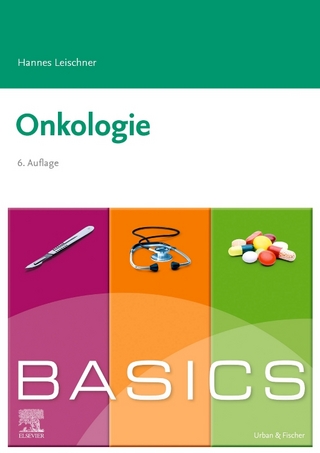
Radiotheranostics - A Primer for Medical Physicists I
CRC Press (Verlag)
978-1-032-13897-8 (ISBN)
Key Features
Provides a comprehensive introduction to the topic, presenting readers with thorough treatment in a cohesive two-volume book
Presents a rigorous approach while remaining accessible to students and trainees in the field
Contains consistent and extensive references to allow readers to delve deeper into the subject
Cari (Caridad) Borrás is a certified medical physicist in Washington, DC, USA, where she works as an international consultant and has an adjunct faculty position at the George Washington University School of Medicine and Health Sciences. She obtained a Doctor of Science (Physics) degree from the University of Barcelona, Spain, having done a thesis research project on the dosimetry and embryological effects of Astatine- 211 at Thomas Jefferson University in Philadelphia, PA, USA, as a Fulbright scholar. She has lectured in more than 300 seminars/courses/congresses, many organized by her; authored/contributed around 100 articles and six book chapters and edited two books. She is a Fellow of ACR, AAPM, IOMP, HPS, and IUPESM, and has received awards/recognitions from SEFM, AAPM, IOMP, ALFIM, ACCE, ACR, and ABR. Michael G. Stabin is a Certified Health Physicist, President of the Radiation Dose Assessment Resource, Inc., living in Kennewick, WA, USA, where he worked for NV5 – Technical Engineering & Consulting Solutions and Hanford Mission Integration Solutions. He was an Associate Professor in the Radiology and Radiological Sciences Department at Vanderbilt University, in Nashville, TN, and a Scientist at the Radiation Internal Dose Information Center of Oak Ridge Institute for Science and Education. He received a Ph.D. in Nuclear Engineering (Health Physics emphasis) from the University of Tennessee, is a member of the HPS and the SNMMI, and is also a Fulbright scholar. He has over 225 publications in the open literature, most on internal dosimetry for nuclear medicine applications, including complete textbooks on health physics and internal dose assessment.
Section I: Introduction. Chapter 1: What is radiotheranostics? Chapter 2: History of radionuclide therapy and theranostics. Chapter 3: Biological principles behind targeted radionuclide therapy for cancer. Section II: Clinical Applications of Targeted Radionuclide Therapy in Cancer Control. Chapter 4: Unconjugated radionuclides. Chapter 5: Radionuclide-conjugated cancer-specific vectors: Peptides. Chapter 6: Radionuclide-conjugated cancer-specific vectors: Small Molecules and antibodies. Chapter 7: Radionuclide-conjugated cancer-specific vectors: Nanoparticles. Chapter 8: Introduction to clinical trials and drug development for radionuclide therapies. Chapter 9: Epidemiologic Studies of Cancer Risk among Patients Administered Radionuclides. Chapter 10: Adverse effects of radionuclide therapy. Section III: Radiation Chemistry and Physics. Chapter 11: Radionuclide production. Chapter 12: Radioactivity measurement and traceability. Chapter 13: Instrumentation, calibration, quantitative imaging, and quality control. Section IV: The Future. Chapter 14: Human resources: Multidisciplinary team education, training, and competence. Chapter 15: Theranostics today: Looking backwards to tomorrow.
| Erscheinungsdatum | 22.02.2024 |
|---|---|
| Reihe/Serie | Series in Medical Physics and Biomedical Engineering |
| Zusatzinfo | 17 Tables, black and white; 10 Line drawings, color; 4 Line drawings, black and white; 10 Halftones, color; 10 Halftones, black and white; 20 Illustrations, color; 14 Illustrations, black and white |
| Verlagsort | London |
| Sprache | englisch |
| Maße | 178 x 254 mm |
| Gewicht | 590 g |
| Themenwelt | Medizin / Pharmazie ► Allgemeines / Lexika |
| Medizin / Pharmazie ► Medizinische Fachgebiete ► Onkologie | |
| Naturwissenschaften ► Biologie | |
| Naturwissenschaften ► Physik / Astronomie ► Angewandte Physik | |
| ISBN-10 | 1-032-13897-1 / 1032138971 |
| ISBN-13 | 978-1-032-13897-8 / 9781032138978 |
| Zustand | Neuware |
| Haben Sie eine Frage zum Produkt? |
aus dem Bereich


